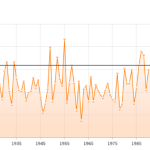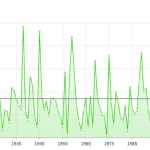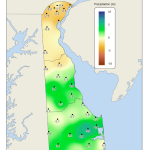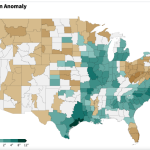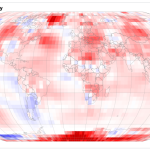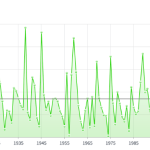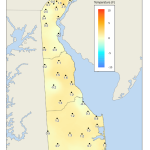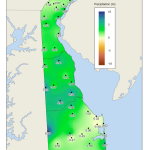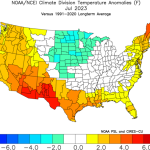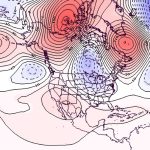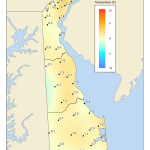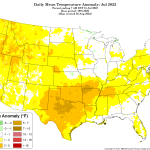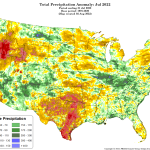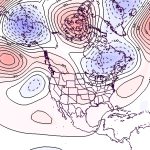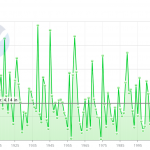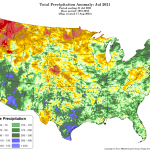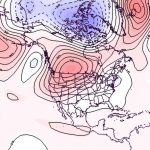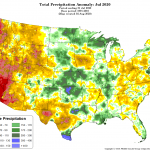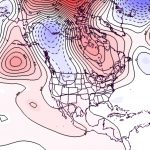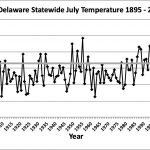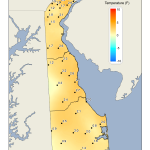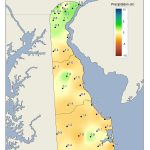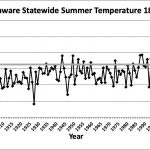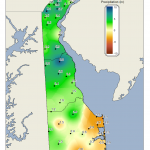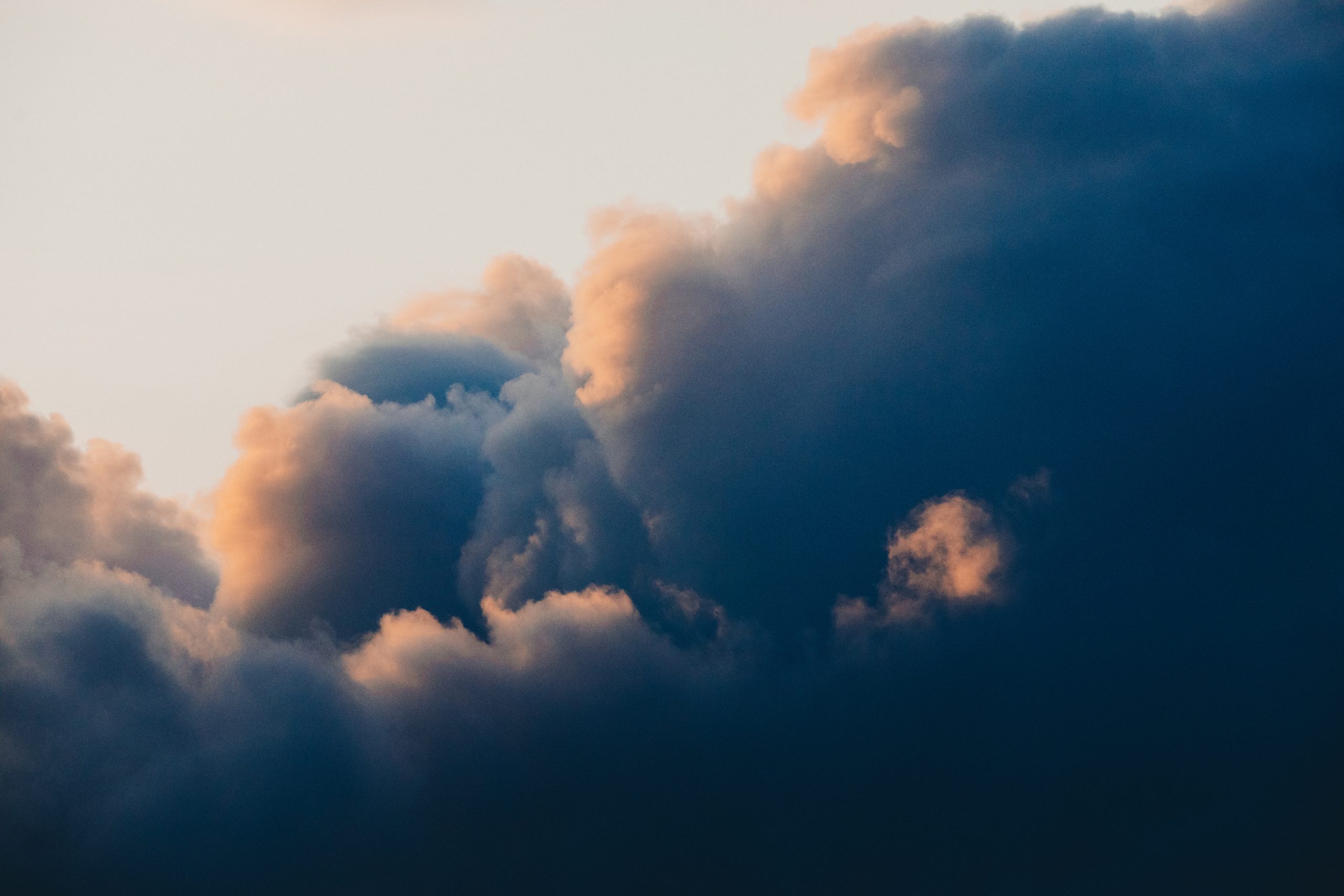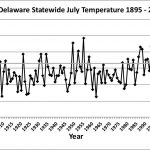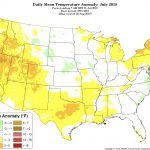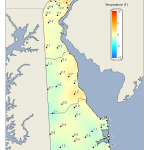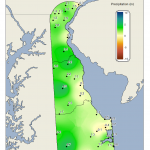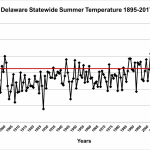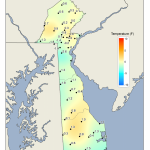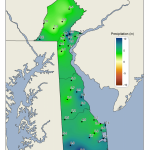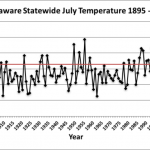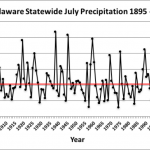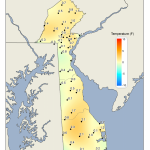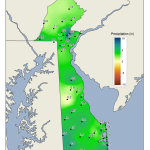July Temperatures
Preliminary data indicates that the statewide average temperature in July was 79.1°F, which is 1.7°F above the 1991-2020 mean value of 77.4°F (Figure 1). July’s temperature was the 10th warmest since records began in 1895. July was also the 8th month in a row in which temperatures have been above normal in Delaware.
July Precipitation
Delaware’s statewide precipitation for July 2024 averaged 3.98 inches, 0.44 inches below the 1991-2020 mean of 4.42 inches (Figure 2). July’s precipitation was in the “normal” range when compared to the last 130 years of observations.
Statewide Spatial Anomalies
Data from the Delaware Environmental Observing System (DEOS) show that temperature departures were positive across the entire state (Figure 3) with most locations seeing positive anomalies of between 1°F and 3°F during the month. Precipitation anomalies varied north-to-south across the state, with positive anomalies covering most of Kent and Sussex counties, and negative anomalies found across New Castle County (Figure 4).
National Anomalies
Temperatures were above normal across the western and eastern portions of the country (Figure 5). Only the central portions of the U.S. saw near or below normal temperatures. Precipitation departures varied across the country (Figure 6). Most of the eastern one-half of the country saw above normal precipitation except the upper Ohio Valley and portions of the Mid-Atlantic, while the western U.S. experienced below or near normal precipitation. The 500 hPa height pattern for July showed a jet stream ridge across the east and west coasts, and a weak trough over the central portions of the country (Figure 7) contributing to the temperature anomalies in these regions.
Global Anomalies
July 2024 ranked as the warmest July on record for the globe since 1850. Global temperatures were 1.21°C (2.18°F) above the 1901-2000 mean. Particular warmth was found across western North America, Greenland, and Antarctica (Figure 8).
- Figure 1. Delaware statewide mean July temperature (degrees F) 1895-2024. Black line indicates 1991-2020 normal (NOAA, NCEI, Climate at a Glance: Statewide Time Series).
- Figure 2. Delaware statewide July precipitation (inches) 1895-2024. Black line indicates 1991-2020 normal (NOAA, NCEI, Climate at a Glance: Statewide Time Series).
- Figure 3. July 2024 average temperature departures (degrees F) from the 1991-2020 mean based upon DEOS station data.
- Figure 4. July 2024 precipitation departures (inches) from the 1991-2020 mean based upon DEOS station data.
- Figure 5. United States climate division temperature anomalies (oF) for July 2024 (NOAA, NCEI, Climate at a Glance: Divisional Mapping).
- Figure 6. United States climate division precipitation anomalies (inches) for July 2024 (NOAA, NCEI, Climate at a Glance: Divisional Mapping).
- Figure 7. 500 hPa geopotential height anomalies for July 2024. Negative (blue) anomalies indicate the presence of an anomalous jet stream trough while positive (red) height anomalies indicate the presence of an anomalous jet stream ridge.
- Figure 8. Global temperature anomalies (degrees C) for July 2024 (NOAA, NCEI, Climate at a Glance: Global Mapping).


